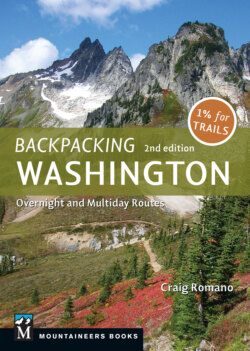Читать книгу Backpacking Washington - Craig Romano - Страница 15
На сайте Литреса книга снята с продажи.
ROAD AND TRAIL CONDITIONS
ОглавлениеGenerally, trails change little year to year. But change can occur, and sometimes quickly. A heavy storm can wash out sections of trail (or access road) in moments. Windstorms can blow down trees by the hundreds, making trails unhikeable. Snow can bury trails well into the summer. Avalanches, landslides, and forest fires can also seriously damage or even obliterate our trails.
Lack of adequate agency funding is also responsible for trail neglect and degradation. Before setting out, be sure you contact the appropriate land manager to check on current trail and road conditions. On the topic of trail conditions, it’s vital that we recognize the countless volunteers who donate tens of thousands of hours to trail maintenance each year. The Washington Trails Association (WTA) alone coordinates upward of 150,000 hours of volunteer trail maintenance each year. Our trail system faces ever-increasing threats, including lack of adequate trail funding, inappropriate trail uses, and conflicting land management policies and practices.
One of the biggest threats now is lost access. Many roads once used for cutting and hauling timber are also used by hikers to get to trailheads. Many of these old forest roads are not maintained and have become downright dangerous. While I support the decommissioning of many of the roads that go “nowhere” as both economical and environmentally prudent, I am deeply disturbed by the amount of main trunk roads falling into disrepair. When a road is closed for several years, the trails radiating from it usually receive no maintenance, often leading them to become unhikeable.
Another issue of concern is the increased motorized use of many of our trails. Motorized vehicles on trails where they’re permitted tend to discourage hikers. While the majority of motorcyclists are decent people and I have shared trails with them, hiking alongside them is simply not a wilderness experience. And while I support the rights of motorized recreation users to have access to public lands, many of the trails currently open to them (in fragile alpine environments and large roadless areas) should never have allowed them. Only two trips described in this book—and one just seasonally—are open to motorcycles. This guide also includes several trails in danger of becoming unhikeable; they are marked in this book with a special icon.
On the other hand, we’ve had some great trail successes, for access and more, in recent years thanks in large part to a massive volunteer movement spearheaded by WTA and other organizations.
